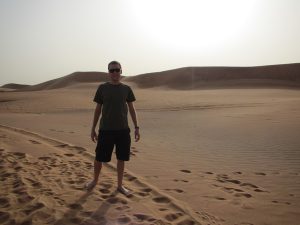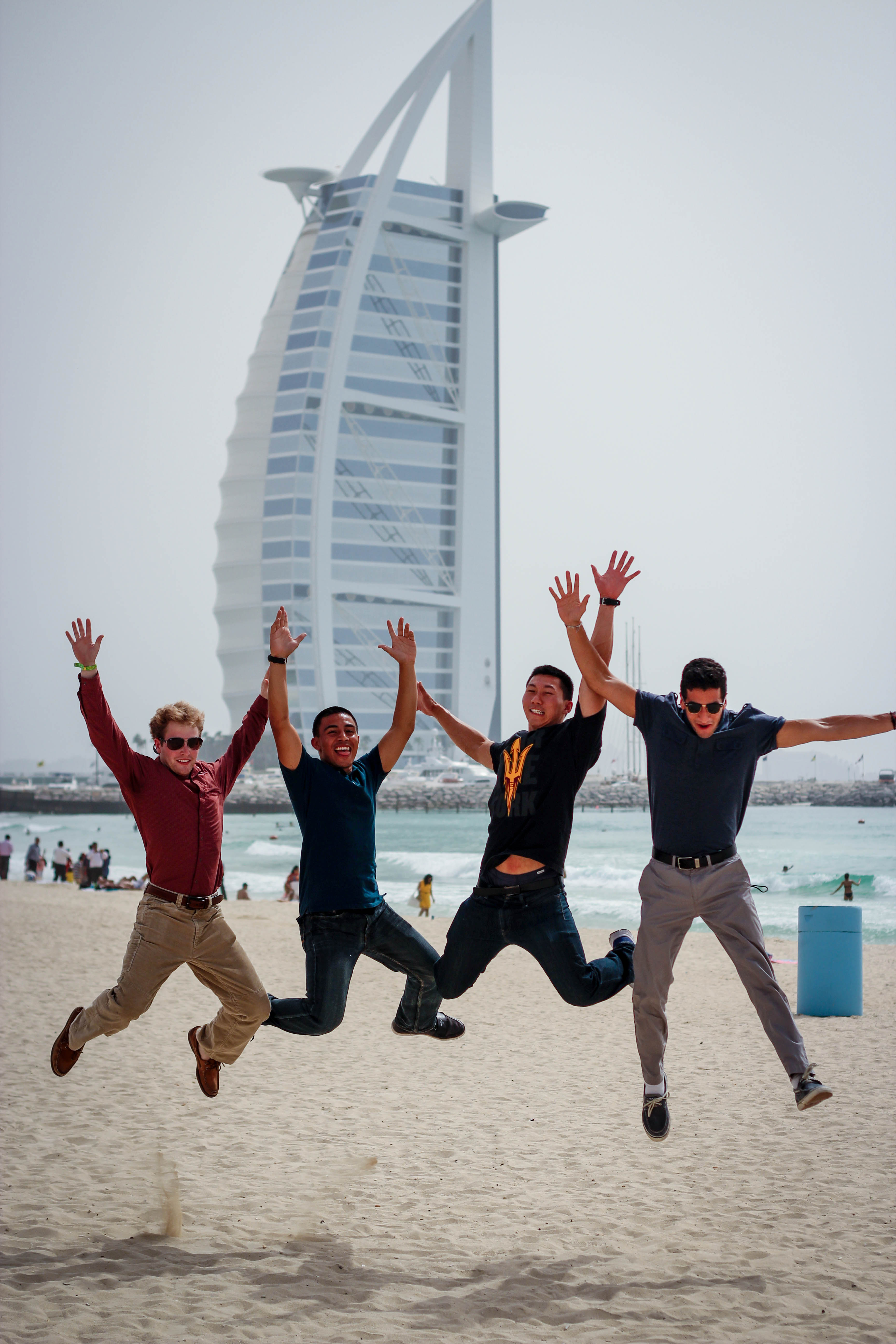Don’t make snow in the desert: Lessons learned from my trip to Dubai

As a graduate student in the School of Sustainability, Matt Cohen is studying sustainable urban development and what better way to gain a global perspective on the topic than traveling to Dubai, one of the Middle East’s most extravagant and well-known cities. As part of the Global Sustainability Studies Program, Cohen joined fellow students and sustainability faculty in exploring landmark sustainability projects and the re-branding of the city. Here, he shares his experience, which included a meeting with Dubai’s Minister of Economy, His Excellency Sultan bin Saeed Al Mansouri.
Why did you choose to study sustainable tourism and culture in Dubai?
Studying sustainability in Phoenix, we can draw many parallels to the experience in Dubai. At the same time, as the United Arab Emirates (UAE) is an autocratic state, differences in governance made for unique comparisons between the two cities.


